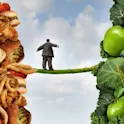Frontiers news
04 Aug 2016
Most viewed Physiology articles in July 2016
NOX2 Inhibition Impairs Early Muscle Gene Expression Induced by a Single Exercise Bout Carlos Henríquez-Olguín, Alexis Díaz-Vegas, Yildy Utreras-Mendoza, Cristian Campos, Manuel Arias-Calderón, Paola Llanos, Ariel Contreras-Ferrat, Alejandra Espinosa, Francisco Altamirano, Enrique Jaimovich and Denisse M. Valladares* Cerebral Regulation in Different Maximal Aerobic Exercise Modes Flávio O. Pires*, Carlos A. S. dos Anjos, Roberto J. M. Covolan, Fabiano A. Pinheiro, Alan St Clair Gibson, Timothy D. Noakes, Fernando H. Magalhães and Carlos Ugrinowitsch Erythropoietin Does Not Enhance Skeletal Muscle Protein Synthesis Following Exercise in Young and Older Adults Séverine Lamon*, Evelyn Zacharewicz, Emily Arentson-Lantz, Paul A. Della Gatta, Lobna Ghobrial, Frederico Gerlinger-Romero, Andrew Garnham, Douglas Paddon-Jones and Aaron P. Russell Transient Hepatic Overexpression of Insulin-Like Growth Factor 2 Induces Free Cholesterol and Lipid Droplet Formation Sonja M. Kessler, Stephan Laggai, Elien Van Wonterghem, Katja Gemperlein, Rolf Müller, Johannes Haybaeck, Roosmarijn E. Vandenbroucke, Manfred Ogris, Claude Libert and Alexandra K. Kiemer* Acclimation Training Improves Endurance Cycling Performance in the Heat without Inducing Endotoxemia Joshua H. Guy, David B. Pyne, Glen B. Deakin, Catherine M. Miller and Andrew M. Edwards* The Regenerative Potential of Female Skeletal Muscle upon Hypobaric Hypoxic Exposure Rosa Mancinelli, Ester S. Di Filippo, Vittore Verratti, Stefania Fulle*, Luana Toniolo, Carlo Reggiani and Tiziana Pietrangelo […]









